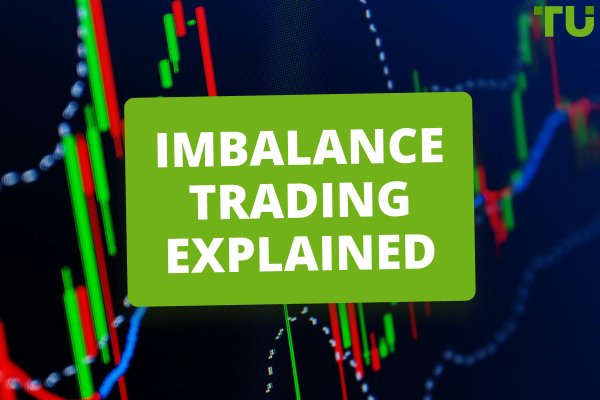How Do You Trade Using Parabolic SAR?
The Parabolic SAR (Stop and Reverse) is a technical indicator primarily used by traders to determine the future direction of an asset's price movement. It's often used as a trailing stop-loss indicator or to identify potential entry and exit points in a trend.
Navigating Forex and cryptocurrency trading demands not only courage and knowledge but also the right set of tools. One stumbling block traders frequently encounter is the challenge of timing their trades correctly - entering too early or too late can mean the difference between profit and loss.
This article aims to demystify the Parabolic SAR (Stop and Reverse) indicator, a powerful tool designed to help traders seize opportunities at the optimal moment. By providing a clear understanding of how the Parabolic SAR works and practical tips on using it to enhance trading strategies, this guide will help traders use this indicator to its full potential, thereby improving their trading outcomes.
-
Best used in markets with a clear uptrend or downtrend.
-
Trend confirmation is stronger when paired with other indicators.
-
Notably effective for setting stop-loss and profit targets.
-
Simple settings make it user-friendly for beginners.
-
Compatible with other trading indicators for reinforced signals.
-
Limited effectiveness in flat or sideways markets.
-
Can provide delayed signals, potentially affecting trade outcomes.
-
What is Parabolic Stop and Reverse (SAR)?
The Parabolic Stop and Reverse (SAR) is a technical analysis indicator that determines potential stop and reverse points, identifying the end of a trend and the start of a new one. It is visualized as a series of dots above or below the price bars on a chart.
-
What is the win rate of Parabolic SAR?
The win rate of the Parabolic SAR, like any trading indicator, depends on various factors, including market conditions, timeframe, asset being traded, and the specific trading strategy employed. According to research by Babypips forum users, the accuracy of the indicator can be as high as 80%. According to Wikipedia, during the period of testing of the indicator in 17 years, the confidence level was 95%.
-
Is Parabolic SAR profitable?
The profitability of the Parabolic SAR depends on market conditions and the trader’s skill in using it alongside other indicators. It is known to be more profitable in trending markets than in flat or ranging markets.
-
What is the best timeframe for Parabolic SAR?
The best timeframe for Parabolic SAR varies depending on the trader’s style and goals; however, it is generally more effective on longer timeframes where trends are clearer and less prone to noise, such as the 1-hour, 4-hour, or daily charts.
What is a Parabolic SAR?
The Parabolic SAR, developed by the renowned technical analyst Welles Wilder, is a price-and-time-based trading system. SAR stands for "stop and reverse," which reflects the tool’s primary function: to provide signals for closing current trades and initiating new ones in the opposite direction.

Parabolic SAR indicator on XAU/USD daily chart
This indicator is depicted as dots placed either above or below the price bars on a chart.
What is Parabolic SAR formula?
For an uptrend, the Parabolic SAR formula is:
PSAR(i) = (HIGH(i-1) - PSAR(i-1)) * AF + PSAR(i-1)
For a downtrend, the Parabolic SAR formula is:
PSAR(i) = (LOW(i-1) - PSAR(i-1)) * AF + PSAR(i-1)
How to Interpret This Indicator?
Interpreting the Parabolic SAR involves understanding the position of the dots in relation to the price bars:
-
Dots Below the Price: When the dots are below the price bars, it indicates an uptrend and suggests that the trader should maintain or open a long position.
-
Dots Above the Price: Conversely, dots above the price bars signal a downtrend, advising traders to consider short positions or to close out long positions.
The movement of the dots also plays a critical role. As the trend develops, the dots will start to close in on the price line, ultimately stopping and reversing when the price crosses the dot line. This crossover points to a potential reversal in the market’s direction, prompting traders to reassess their positions.
Traders value the Parabolic SAR for its straightforward signals and ease of interpretation, making it an essential tool in the arsenal of both novice and experienced traders striving to navigate the complexities of market trends and reversals efficiently. This indicator not only helps in confirming trend directions but also in indicating potential reversals, providing a dual function that enhances its utility in diverse trading scenarios.
Best Forex brokers


How to use Parabolic SAR for analysis?
The Parabolic SAR is invaluable for trend analysis and spotting potential reversals, enhancing trading strategy and risk management.
Trend Confirmation
The Parabolic SAR confirms trends when its dots align with other indicators:
-
Consistency of Dots: Dots below price bars suggest an uptrend; above indicates a downtrend.
-
Alignment with Other Indicators: If other indicators like the MACD or moving averages support the Parabolic SAR’s signals (e.g., both showing an uptrend), this provides a strong confirmation of the trend’s direction and strength.
Potential Reversal Points
This indicator is also adept at signaling possible trend reversals:
-
Change in Dot Position: A shift in the dots from below to above the price bars (or vice versa) signals a potential reversal. This warns traders it might be time to exit their current positions and consider entering new ones based on the trend’s new direction.
-
Strategic Entries and Exits: When dots crossover the price bars, traders should prepare to stop and reverse their trades. Closing positions in line with the fading trend and initiating new ones as indicated preserves capital and locks in gains.
Integrating the Parabolic SAR into your analysis toolkit not only confirms trends but also helps pinpoint when those trends are losing momentum, crucial for optimizing entry and exit strategies. This dual benefit makes it a staple in effective trading frameworks.
How to use Parabolic SAR for trading?
The Parabolic SAR is versatile, serving effectively both as a standalone indicator and as a component within a trading system.
Standalone Use
Independently, the Parabolic SAR guides entry and exit points:
-
Entry Signal: Initiate a long position when the dots switch to below the price candles, suggesting upward momentum. Enter short positions as the dots appear above the price, indicating downward trends.
-
Exit Signal: A crossover of the dots to the opposite side of the price suggests a potential reversal, signaling an exit or the start of a counter-position.
As Part of a Trading System
When integrated with other indicators like the RSI or MACD, the Parabolic SAR can help confirm trends and filter out misleading signals, enhancing decision-making accuracy.
Effectiveness and Success Rate
In a 17-year study of technical indicators, the Parabolic SAR came up at a 95% confidence level when used as a stop-loss framework, not as a trade marker. The study utilized default settings of 0.02 Step Period and 0.20 Max Step Period.
However, the Parabolic SAR is not recommended to be used alone; it is recommended to use it with other indicators and analysis methods to create a comprehensive trading framework.

Results of testing the strategy of trading by Parabolic SAR indicator on XAU/USD market
The TradingView platform has a built-in basic trading strategy based on the Parabolic SAR indicator. For example, when tested on the hourly chart of XAU/USD, the strategy shows a slight but positive result. Although the number of profitable trades = 35%, the profit factor is above one. This means that the strategy allows you to profit from holding a position in trend movements, but leads to losses during flat periods.
Entering Trades with Parabolic SAR
To enter trades using the Parabolic SAR, traders look for the indicator's dots to signal the trade's direction. For example, the provided screenshot shows how to use the Parabolic SAR to enter the trade and the moving average for a filter, which reinforces bullish confidence.

Chart showing a buy entry using Parabolic SAR
In our chart example, once the first point has settled below the candlesticks, the trader is justified to enter a long position by placing a stop loss just below the most recent Parabolic SAR point to reduce risk.
Alternatively, the trader can wait for the second or third point to form to make sure the trend is stable.
Stop-Loss and Target
The stop-loss serves as a safety net in case of a trend reversal. To calculate a profit target, one could employ a risk-reward strategy. If the risk (distance to stop-loss) is 20 pips, setting a target 40 pips above the entry provides a 2:1 risk-reward ratio. This disciplined approach helps in managing trades systematically.
Exiting Trades with Parabolic SAR
Exiting trades with the Parabolic SAR is about recognizing the indicator's signals for potential trend reversals and acting accordingly. For an exit signal, traders watch for the Parabolic SAR dots to switch positions relative to the price.

A Solan /USDT chart; using Parabolic SAR to enter and exit trades
In the provided chart, if a trader had entered a long position during the uptrend indicated by the dots below the price bars, the emergence of dots above the price bars would signal a potential trend reversal, prompting an exit.
We note the latest set of dots have appeared above the price bars after a sustained downtrend, suggesting a selling or shorting opportunity. If we were already in a short position from the previous dot flip, this would be where we consider taking profits or at least tightening our stop-loss to protect from any potential upward reversal.
A few practical remarks
-
Parabolic signals are effective only on a strong trend, so it is recommended to additionally verify the presence of a trend using other indicators, for example, moving averages.
-
Indicator can be used as a trailing stop: on a strong trend you can move the StopLoss order to the previous PSAR point.
-
If the price chart has deviated strongly from the indicator line, it is likely that they will soon converge and the trend will change to the opposite one, or the market is preparing for a flat period.
-
During flat periods (even wide!) you can't work on Parabolic's signals - its signals of rollback from the channel boundaries are too late.
-
The larger the step of the indicator, the more sensitive the indicator will be to price changes. If the step is set too high, the indicator will fluctuate above and below the price too often, and the reliability of signals decreases sharply.
-
Maximum step controls the Parabolic during the movement. The lower the maximum step value is set, the farther the Parabolic point will be from the price.
-
The initial step usually lies between 0.015 and 0.025, and the maximum AF value varies from 0.18 to 0.23. The author of the indicator Wilder recommended setting the step value at 0.02 and setting the maximum step value at 0.20 - these parameters were determined by experience, they work perfectly on most trading assets, and it is not recommended to change them.
Which trading indicator is most accurate?
No single trading indicator wins the title of "most accurate" universally; each has its strengths and optimal conditions for use. The Parabolic SAR thrives in markets with a strong trend, either uptrend or downtrend. It's less effective in sideways or flat markets where price movements are minimal and lack a clear direction.
Traders should use the Parabolic SAR when its use cases match current market conditions, often employing it in conjunction with other indicators to validate its signals.
Benefits of Using Parabolic SAR
The Parabolic SAR offers several advantages:
-
Simple to Implement: Its settings are straightforward, making it easy to apply even for novice traders.
-
Compatibility with Other Indicators: It works well alongside other tools, providing additional confirmation for trades.
-
Clear Entry and Exit Signals: The indicator provides explicit signals for when to potentially enter and exit trades.
-
Effective Trend Tracking: It helps traders stay on the right side of the market trend, which is essential for capturing larger market moves.
Why Not to Trade Using Parabolic SAR
However, the Parabolic SAR isn't without its drawbacks:
-
Limited Use in Flat Markets: Its signals can be unreliable in non-trending, flat market conditions.
-
Delayed Signals: At times, the indicator may provide signals that are too late, resulting in missed opportunities or potential losses.
-
Vulnerability to Gaps and Sharp Price Movements: Sudden market movements can lead to erroneous signals, prompting poor trading decisions.
Expert opinion
The Parabolic SAR is a trader's compass. It guides through trend's terrains but use it wisely. Pair it with momentum indicators to filter the noise and sharpen your market entry and exit strategy. No single indicator holds all the answers.
Summary
In essence, the Parabolic SAR is a strategic tool for traders seeking clear signals in trending markets. While not infallible, especially in flat markets, its benefits in trend confirmation and the simplicity of its use make it a valuable indicator. Employed with other analysis tools, the Parabolic SAR can significantly bolster a trader's confidence in their decisions, navigating them through the ebbs and flows of market dynamics.
Glossary for novice traders
-
1
Broker
A broker is a legal entity or individual that performs as an intermediary when making trades in the financial markets. Private investors cannot trade without a broker, since only brokers can execute trades on the exchanges.
-
2
Trading
Trading involves the act of buying and selling financial assets like stocks, currencies, or commodities with the intention of profiting from market price fluctuations. Traders employ various strategies, analysis techniques, and risk management practices to make informed decisions and optimize their chances of success in the financial markets.
-
3
Long position
A long position in Forex, represents a positive outlook on the future value of a currency pair. When a trader assumes a long position, they are essentially placing a bet that the base currency in the pair will appreciate in value compared to the quote currency.
-
4
Trading system
A trading system is a set of rules and algorithms that a trader uses to make trading decisions. It can be based on fundamental analysis, technical analysis, or a combination of both.
-
5
Forex indicators
Forex indicators are tools used by traders to analyze market data, often based on technical and/or fundamental factors, to make informed trading decisions.
Team that worked on the article
Vuk stands at the forefront of financial journalism, blending over six years of crypto investing experience with profound insights gained from navigating two bull/bear cycles. A dedicated content writer, Vuk has contributed to a myriad of publications and projects. His journey from an English language graduate to a sought-after voice in finance reflects his passion for demystifying complex financial concepts, making him a helpful guide for both newcomers and seasoned investors.
Dr. BJ Johnson is a PhD in English Language and an editor with over 15 years of experience. He earned his degree in English Language in the U.S and the UK. In 2020, Dr. Johnson joined the Traders Union team. Since then, he has created over 100 exclusive articles and edited over 300 articles of other authors.
Mirjan Hipolito is a journalist and news editor at Traders Union. She is an expert crypto writer with five years of experience in the financial markets. Her specialties are daily market news, price predictions, and Initial Coin Offerings (ICO).











